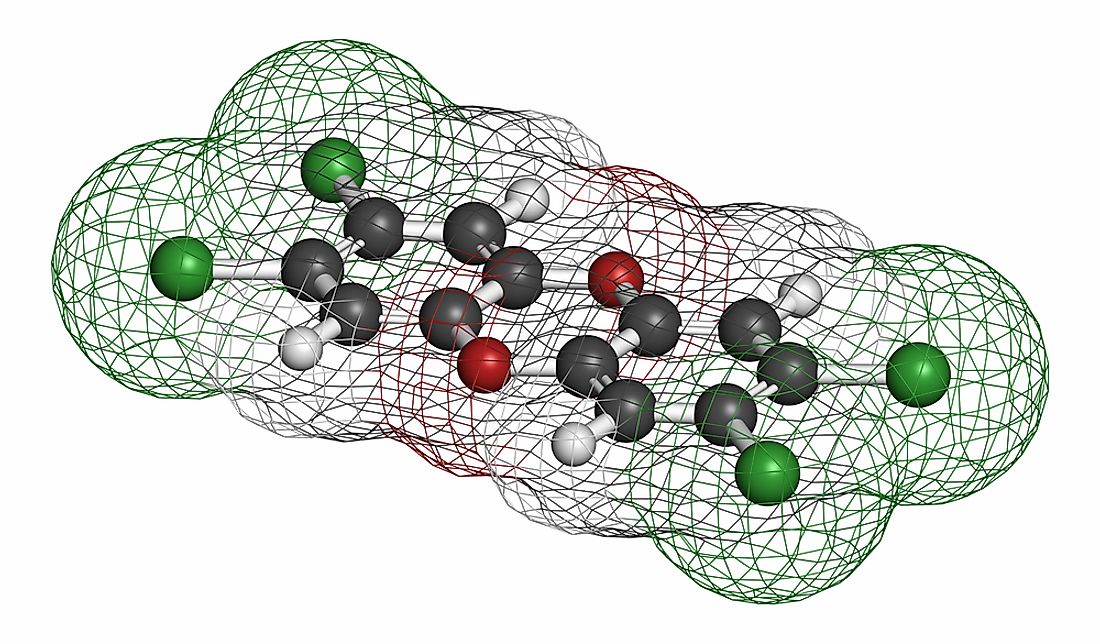What Happened During The Seveso Disaster?

The Seveso disaster was experienced on the afternoon of July 10, 1976, when a white cloud escaped from a small chemical plant located in Meda, Italy. The residents of Seveso and Meda watched as it slowly descended on them not realizing the nightmare that would soon unfold before them.
What Caused It?
The plant, which was owned by the ICMESA (Industrie Chimiche Meda Società Azionaria) company, was itself a sub-subsidiary of the Roche Group. It was a producer of Trichlorophenol (TCP) which was used in the production of disinfectant soaps by the company. One of the components of the cloud was about one kilogram of 2,3,7,8-tetrachlorodibenzo-p-dioxin (TCDD). The compound is a proven carcinogenic by-product of the TCP production process that was produced when the temperature rose above 200°C. The accident was caused by an uncontrolled rise in temperature and pressure which led to the production of TCDD and its eventual leakage as the safety valves at the top of the reactor blew out.
Effects on the Local Population
It did not cause any immediate human fatalities; however, a small number of domestic animals in the vicinity died due to exposure, and more than 77,000 animals were slaughtered as a preemptive measure aimed at protecting the food chain. Shortly after the incident, there were many reported cases of Chloracne, a rare skin condition which is caused by exposure to toxic hydrocarbon chemicals. Although only a small part of the population was affected, most of the patients were children. Cases reported were mild, and all were eventually resolved. This was the most evident and immediate effect of the accident. The region was classified into three zones A, B, and R according to the extent of toxicity. Over 700 inhabitants were evacuated with those from the most severely contaminated area having to leave behind all but their bare essentials. Most of the evacuees were eventually able to return to their homes. About 80% of the TCDD settled on the local foliage until it rained after a few weeks whereby it was then washed into the soil. It was argued that if the vegetation had been disposed of, then the soil contamination would not have been as severe. Eventually, the topsoil that had to be removed in zone A along with the rest of the contaminated materials which included the debris from the uninhabitable houses was put in special concrete basins.
Aftermath of the Seveso Disaster
The local government, in coordinated efforts with ICMESA, embarked on cleaning up the contaminated area. These efforts were a true success, and by April 1984, decontamination of Zone A was complete. Some evacuees were able to return to their homes, and the local government turned the rest of the zone into a public park known as the Seveso Oak Forest Park. The chemical plant was shut down and all of its waste, which was stored in 41 barrels, was earmarked for disposal as nuclear waste. The move resulted in a debacle of international proportions as the company contracted to do so opted to just transport them out of the country and store them in an unused abattoir in a village in Northern France. Eventually, ROCHE Group, the parent company had to undertake to properly, disposed of the barrels and issued an official statement in 1992 declaring that it had incinerated the waste in Switzerland. Several claims disputed this, but the company was eventually cleared in 1994 by an Environmental Commission set up to investigate the claims. Due to the fiasco resulting from the disposal of the Seveso waste, the European Common Market, now known as the European Union, passed the Seveso Directive, and later on the Seveso II Directive. Studies carried out over the years reported a significant increase in male deaths from heart disease, especially from those living in Zone A, and increased incidences of cancer. It was also noted that there was a decrease in male births in the area.
Five former employees of the company were initially sentenced to prison, however, after several appeals, only two of them were found guilty of criminal negligence. Their sentences were suspended. To the victims of the Seveso accident, who had had their lives disrupted either through the loss of their homes, their health, and in some cases the loss of their livelihoods as the region's economy eventually died, must have felt like the final insult. There were violent reactions with the most extreme being the assassination of Paolo Paoletti, a Director of Production at ICMESA. One of the few positive outcomes of the incident was the Seveso Directive and laws enacted by the Italian government that ensured better monitoring of chemical plants and the impact they would possibly have on people and the environment.







